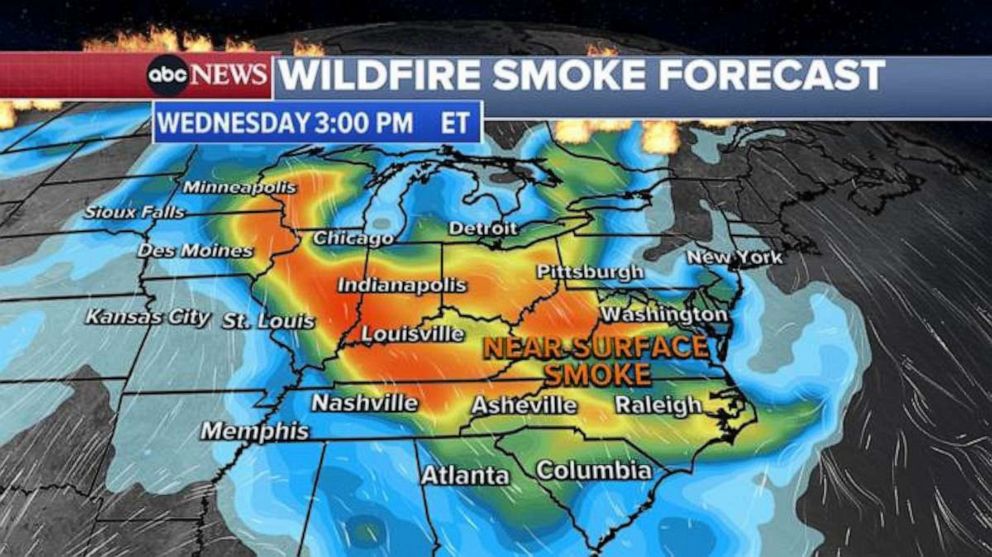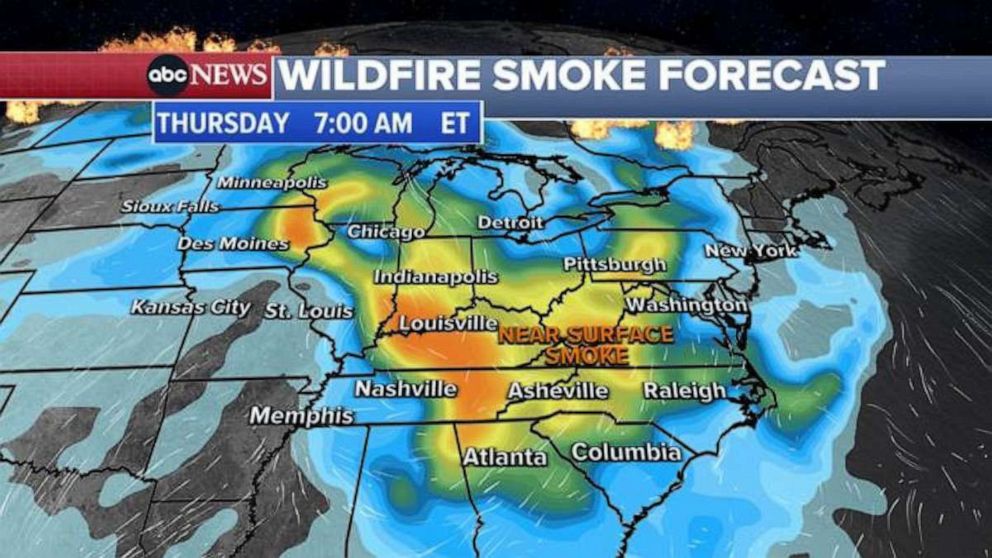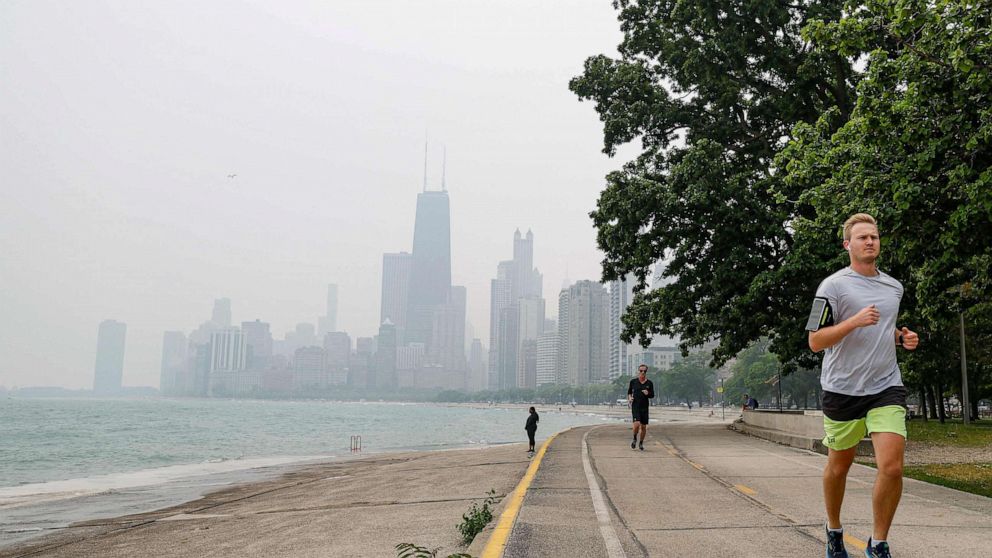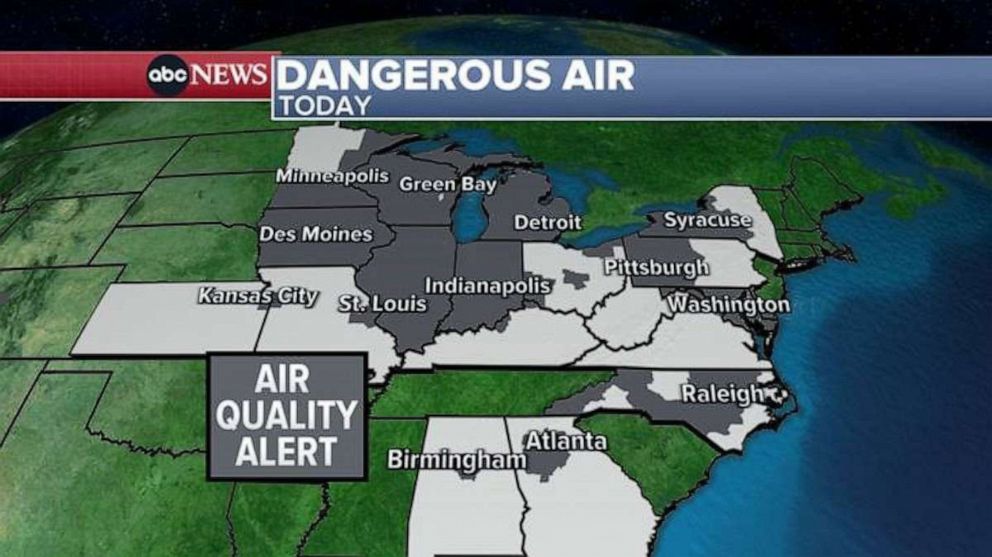The hundreds of wildfires burning in Canada are continuing to cause poor air quality conditions for millions of residents in the U.S.
On Wednesday, the National Weather Service issued air quality alerts for at least 20 states from Minnesota and as far south as Georgia. The unhealthy air quality alerts even extended to the Northeast including all of New York state and New Jersey.
The smoke will linger over Minnesota to Washington, D.C., and down to Carolinas on Wednesday afternoon.

Smoke from Canadian wildfires is forecast to blanket parts of the United States, from Minnesota to Washington D.C. and down to the Carolinas, on June 28, 2023.
ABC News
By Thursday morning, cities such as Minneapolis, Chicago, Indianapolis, Atlanta and Pittsburgh will be affected by smoke, forecasts show.

Smoke from Canadian wildfires will be seen in major U.S. cities like Minneapolis, Chicago, Indianapolis, Atlanta and Pittsburg on the morning of June 29, 2023.
ABC News
The smoke will linger from Detroit to Atlanta and east to Washington, D.C., and near Philadelphia on Thursday afternoon.

Smoke from Canadian wildfires will linger from Detroit to Atlanta and east to Washington, D.C. and Philadelphia by the afternoon of June 29, 2023.
ABC News
The poor air quality is not expected to affect New York City, but will stay in western New York, Pennsylvania and southern New Jersey, forecasts show.
Smoke from the nearly 500 wildfires burning in Canada has been making its way to the U.S. for more than a month, after an unprecedented start to the season in which a record 19.5 million acres has already burned. Canada has also broken its record for annual wildfire smoke emissions.

Joggers run along the shoreline of Lake Michigan with heavy smoke from the Canadian wildfires in the background, on June 27, 2023, in Chicago.
Kamil Krzaczynski/AFP via Getty Images
There is no end in sight for the wildfires due to dry conditions and extreme heat in the region.
Some regions in the Midwest measured at the lowest air quality in the world on Tuesday morning, including regions surrounding Minnesota, according to IQAir, which monitors air quality worldwide.

Twenty U.S. states were under air quality alerts on the morning of June 28, 2023, due to smoke from wildfires in neighboring Canada.
ABC News
Chicago air quality hit the “very unhealthy” category on Tuesday afternoon as the Air Quality Index soared to 250. Any number over 100 is considered unhealthy for sensitive groups, and 250, or “Code Purple,” is considered very unhealthy for all groups.
Once the AQI reaches 151 and above, breathing the polluted air could cause a host of symptoms — even in healthy people with no preexisting conditions — including weakening the immune system and causing damage to the body, including the lungs and heart.

A general view prior to the game between the Chicago Cubs and the Philadelphia Phillies at Wrigley Field on June 27, 2023 in Chicago. An air quality alert was issued due to smoke from Canadian wildfires.
Michael Reaves/Getty Images
Exposure to concentrated amounts of PM2.5 can cause short-term effects such as irritation of the eyes, nose and throat; coughing, sneezing and shortness of breath, and long-term effects such as worsening of conditions including asthma and heart disease, according to the U.S. Environmental Protection Agency

